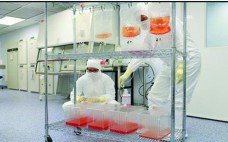Advancements in cell therapy, biofabrication, and synthetic biology have driven the growth of the global regenerative medicine (RegenMed) industry in the past decade. The industry has developed innovative treatment options for patients with otherwise unmet medical needs (1). Human or animal cells or tissues are used as critical raw materials in cell therapy products that can replace, regenerate, or augment patients’ diseased, dysfunctional, or injured cells, tissues, or organs. These cells or tissues can be unmanipulated, or their biological characteristics…
Author Archives: Jon Rowley
Driving Cell Therapy Innovation: Applying Key Lessons from the Evolution and Commercialization of Protein-Based Therapies
After many trials and errors — and milestones — regenerative medicine has become a mainstream part of the biopharmaceutical industry, supported by at least 670 companies and clinics of all sizes. But many experiences in the protein-based industry segment can be leveraged to further improve successful commercialization of advanced therapies. At the 2017 Biotech Week Boston conference, BioProcess International editor in chief Anne Montgomery hosted a panel of industry cell therapy experts to discuss key lessons that can be gleaned…
Meeting Lot-Size Challenges of Manufacturing Adherent Cells for Therapy
Adherent cells such as adult primary cell lines and human multipotent (MSCs) and pluripotent stem cells (hPSCs) present a manufacturing challenge as lot sizes increase from 109 (billions) to 1012 (trillions) cells (1). Typically, manufacturing platforms are good for one log of expansion. So new methods will be required to achieve commercially relevant lot sizes. Traditional two-dimensional culture methods have been used to grow anchorage-dependent cell types. Although such methods are reliable and well defined, they are very labor intensive…
Meeting Lot-Size Challenges of Manufacturing Adherent Cells for Therapy
Adherent cells such as adult primary cell lines and human multipotent (MSCs) and pluripotent stem cells (hPSCs) present a manufacturing challenge as lot sizes increase from 109 (billions) to 1012 (trillions) cells (1). Typically, manufacturing platforms are good for one log of expansion. So new methods will be required to achieve commercially relevant lot sizes. Traditional two-dimensional culture methods have been used to grow anchorage-dependent cell types. Although such methods are reliable and well defined, they are very…



